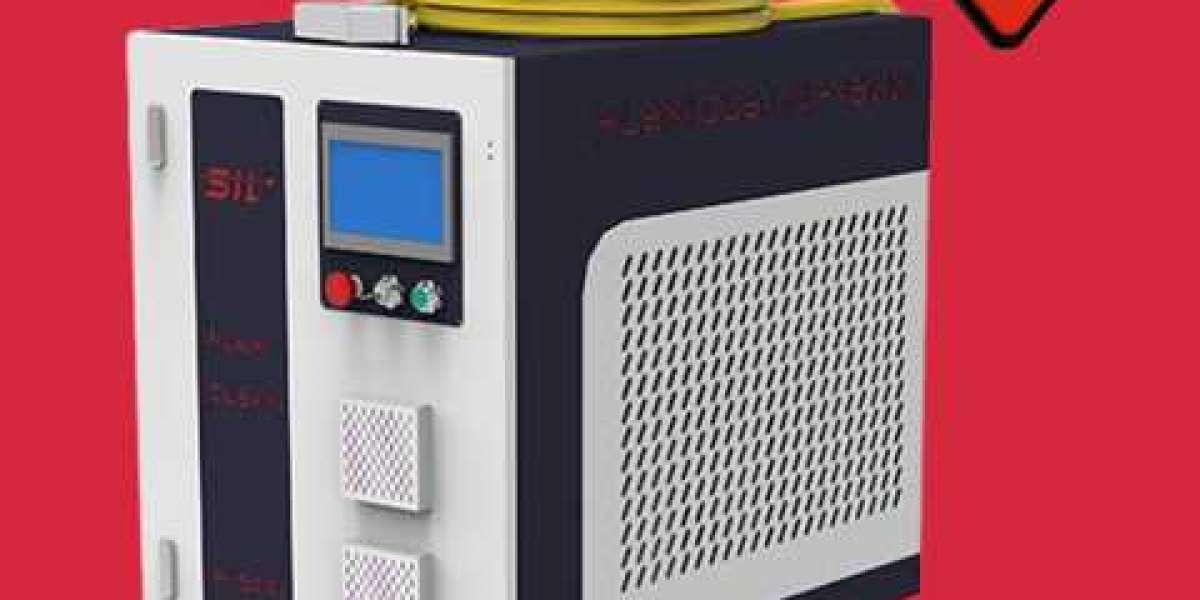While the market offers a variety of models with prices ranging from a few thousand dollars to tens of thousands, understanding why laser cleaner price what they do is more valuable than just knowing the numbers. Let’s break down the underlying realities behind laser cleaner pricing—and separate the fluff from the facts.
What Does “Laser Cleaner Price” Actually Include?
Let’s get this straight: the price tag you see on a laser cleaning machine doesn’t just cover the hardware. It's a combined figure shaped by multiple variables such as:
Power output (in watts)
Laser source quality (fiber, diode, CO₂, etc.)
Cooling system (air-cooled or water-cooled)
Scanning head precision and optics
Build quality and safety features
Country of origin and brand reputation
Customization options
After-sales support and training
The laser cleaner price is not just what you pay at the point of purchase. It's also what you avoid paying for in terms of future maintenance, downtime, replacement parts, or poor results. The better the components, the fewer the surprises over time.
Entry-Level Options: When Low Cost Makes Sense
Let’s say you’re a small automotive workshop that needs to remove rust or paint in batches. An entry-level machine (say 50W to 100W) might run anywhere from $3,000 to $6,000.
These machines can handle simple tasks on thinner surfaces. They usually come with air-cooling, basic safety features, and shorter duty cycles. For light-duty cleaning on small items like tools, pipes, or automotive parts, the laser cleaner price at this range could be justified.
However, expect a few limitations:
Slower cleaning speed
Smaller laser spot size
Shorter continuous run time
Limited technical support (especially from unbranded imports)
Still, if your cleaning volume is low and time isn’t critical, this might serve your needs well without overextending your budget.
Mid-Range Systems: The Workhorse Segment
Jumping into the $6,000 to $15,000 range brings you to the mid-tier machines—typically 100W to 200W fiber laser cleaners with stronger laser sources, better optics, and often with water-cooling for continuous operation.
This is where many industries find the sweet spot. Whether you're in manufacturing, mold cleaning, ship maintenance, or heritage restoration, this category delivers consistent performance without the higher capital requirement of premium systems.
You’ll typically find:
Robust construction
Automated scanning modes
Improved user interfaces
Safety interlocks
Moderate after-sales support
The laser cleaner price here reflects machines that are designed for reliability and moderate to high usage. And that’s where most commercial buyers look.
High-End Professional Systems: Precision and Power
If you’re eyeing 200W to 3000W fiber laser cleaners, then you're likely dealing with high-volume cleaning applications, such as removing thick coatings from pipelines, aircraft structures, railway parts, or large steel plates.
These machines start from $20,000 and can go above $80,000, depending on configuration.
What drives this high laser cleaner price?
Highly stable fiber laser sources from brands like IPG or Raycus
Automated handling systems
Enclosures with Class I laser safety
Real-time feedback sensors
Custom control systems
Advanced training and certifications
High-end cooling solutions
These are built for 24/7 industrial performance. Downtime isn’t an option here. Their pricing reflects durability, long service life, and serious technical support.
The Source Behind the Cost
One overlooked component influencing laser cleaner price is the laser source brand. IPG (Germany), Raycus (China), Maxphotonics, and JPT are leading names. The origin of the source can shift the price by thousands.
For instance:
A 200W Raycus laser system might cost $11,000
The same system using an IPG source can jump to $18,000+
Why the price jump? IPG lasers are known for lower beam divergence, longer lifespans, and precision. Depending on your task, that accuracy may be essential—or unnecessary.
DIY vs. Professional Grade
It’s tempting to find a cheap laser cleaner on marketplaces and assemble it yourself or import one directly. That may cut costs, but it increases the risk of:
No warranty
Safety issues
Low-quality optics
Lack of local support
Frequent part failure
The laser cleaner price in these cases may seem attractive upfront, but the long-term operational headaches can far outweigh the savings.
Renting vs. Buying: A Cost-Based Decision
Not ready to commit to a purchase? Renting a laser cleaning machine may cost $200 to $800 per day, depending on wattage and service provider. This helps gauge performance before committing to a specific model or price tier.
Many industrial clients opt for rentals initially to calculate:
Time saved on manual cleaning
Labor cost reduction
Quality of surface prep
ROI potential
The data from real-world trials helps them justify the laser cleaner price when it's time to buy.
Price vs. Performance Trade-Offs
Let’s say you’re comparing two 1000W laser cleaners—one at $18,000 and another at $26,000. On paper, specs might look similar. But dig deeper:
One uses premium galvanometers, the other basic.
One includes intelligent temperature control, the other doesn’t.
One comes with 24/7 service and 1-week delivery, the other ships in 45 days and no service.
Those $8,000 differences may look unnecessary—until your cleaner malfunctions mid-production. That’s when the laser cleaner price pays for itself.
Industry Use Case: Rail Industry Surface Prep
A rail maintenance contractor adopted a 2000W fiber laser cleaning system for prepping train bogies and brake components. The initial investment of $45,000 included a Class I enclosure, safety interlocks, IPG laser source, and operator training.
In six months:
They reduced abrasive cleaning costs by 78%
Improved turnaround time by 3x
Eliminated respiratory risk from dust
That laser cleaner price transformed into measurable, bottom-line savings.
Final Thoughts
Laser cleaner price is more than just a number—it’s an indicator of the machine’s capability, endurance, precision, and the level of support you’ll receive. Whether you’re running a small metal workshop or managing surface prep in a heavy-duty industrial zone, your application, throughput, and tolerance for downtime should dictate how much you’re ready to invest.
Skipping critical components to save a few thousand today can cost you productivity and peace of mind tomorrow. So instead of asking how much it costs, start asking how much it saves.


